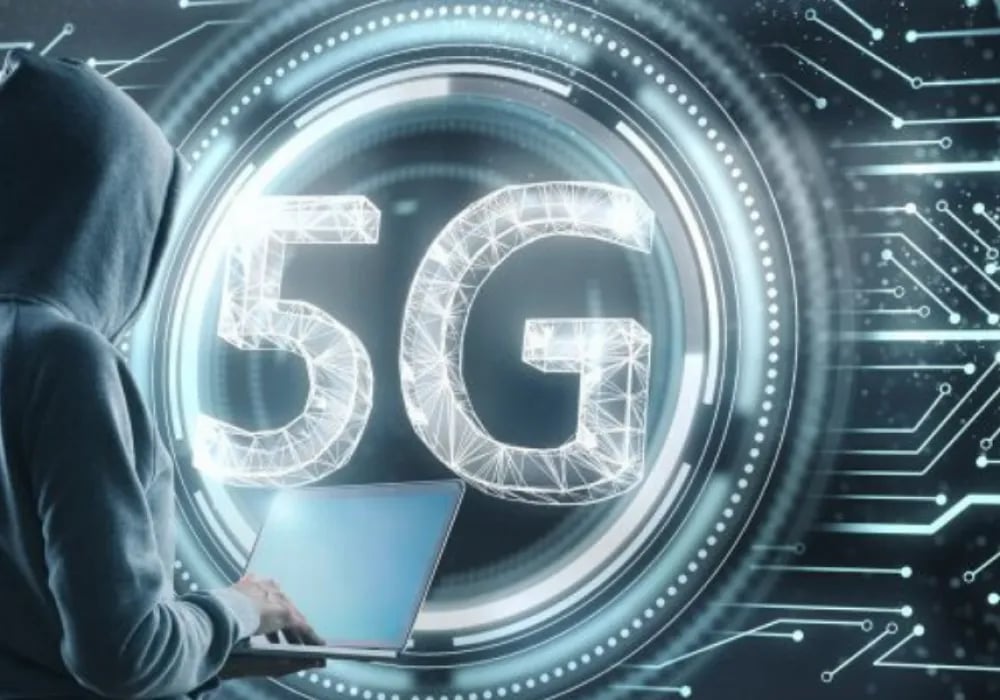Apr 30, 2020
5G Cybersecurity: Are We Prepared?

Are we prepared for cybersecurity in the 5G era?
In 2020, the telecom industry is set to revolutionize the world, with the launch of 5G network services, along with AI, IoT, and machine learning. Mobile operators like Verizon, T-Mobile, and Sprint, are competing amongst themselves to be the first in the market to offer 5G-enabled services, to their customers. In the coming era, people dream of having autonomous driving, smarter cities, smarter homes, and much more. But, while boasting about the advanced capabilities of 5G network with high speed, increased data rates, low latency, and ubiquitous connectivity, we should also address the potential vulnerabilities.
5G Cybersecurity
Cybersecurity of 5G Networks is one hot-button issue that is considered a significant threat to the emerging 5G technology, and security testing will play a major role to cater the same. Software testing companies need to prepare themselves well, to face these threats and update their security testing services to protect enterprises from cyber threats.
Impact of 5G Security
5G brings along a plethora of benefits like high network speed, improved communication, and seamless connectivity to leverage IoT, and many more. Network security will become crucial with the evolution of 5G in the coming years. To strengthen the 5G security, networks will need high-level encryption, NFV (Network Function Virtualization), network slicing, and Mobile edge computer, and other advanced featured to be implemented.
Challenges in the 5G Era
As the world is prepared to be connected through 5G, there is going to be an increased demand in IoT. With technological advancements, there can be more business disruptions as well. Cyber attacks can damage your business if cybercriminals manage to breach IoT devices and squander with sensitive client data. According to Gartner, “5G Mobile Phones’ Market Share will grow rapidly, from 12% in 2020 to 43% in 2022.” The onus of keeping the customers’ data and the software secured and robust is on the security testing company to protect businesses while making technological advancements in cybersecurity in 5G era. Software testing companies must understand the various threats that can be faced in the days to come. Let us have a look at them:1. Distributed digital routing
Cybersecurity can be very well ensured in the case of 3G and 4G, as the network designs are apparent and well connected. 5G network, on the other hand, is distributed and based on software-defined digital routing, which makes it challenging to inspect and control cyber threats to ensure 5G security, if any.
2. AI vulnerability
These days, enterprises are advancing to manage their networks using AI. But, Artificial intelligence is vulnerable and can lead to a threat to the entire network.
3. Virtual Networks
Physical appliances will be replaced by virtual networks in 5G technology, leading to a complicated network, which may act as a boon to cyber attackers in the years to come.
4. Expanded Bandwidth
5G offers Dynamic Spectrum Sharing to provide bandwidth expansion. Low-cost and short-range antennas can be easily targeted by hackers causing additional vulnerabilities in the network deployed in urban areas.
The reasons, as mentioned above, make it compulsive for entrepreneurs to look for the best and reliable telecom software testing services to scale up their business in the 5G network era.5. Easy to hack
Billions of smart devices are attached to the 5G network, and they are prone to be attacked by cyber attackers. Hackers are always looking out for insecure IoT devices to plant their malware.
Importance of Telecom Domain Testing
5G and Future of Cybersecurity with Security Testing
Software testing companies need to assess and update their security testing services domain to cater to the technological advancements in the year 2020. Businesses need to adopt a robust asset management system, along with updated security standards, to tackle the threats caused by the emerging technology, mainly cybersecurity of 5G network.1. Comprehensive security testing
Due to the complexities and challenges with the 5G era, the security aspects need to be thoroughly monitored to maintain and achieve a secure and robust system. As compared to previously used 3G or 4G standards, 5G will be more secured, but they require proper configuration and management of the security domain. This will also help in providing tighter security for managing third parties and better control on the supply chain management.
Enhanced security controls are gaining a lot of attention these days as there is an increase in the software content of 5G networks and more demand for the IoT devices. Software testing companies need to implement industry best practices and follow security standards at every software development stage, starting from coding, testing, and release. Automated security testing services have a significant role to play in carefully handling cyber threats.2. Shift to Virtual Networks
Software-centric and virtualized networks are used in the 5G era to deliver enhanced performance at reduced costs. There is a significant shift from the traditional and customized hardware to software components that are running on COTS (Commercial off-the-shelf) hardware. As there is a drastic change expected in the communications landscape, some challenges are sure to follow. With the usage of latest and unique software architecture in 5G, current technologies like HTTP and REST APIs are used to replace the proprietary interfaces that were used before. This makes the 5G network more vulnerable to cyber attacks.
Also, NFV or Network Function Virtualization relies on a software stack and infrastructure for the execution of network functions. It will effectively deliver scalable results, as compared to the traditional platform approaches. A software system that is composed of various open-source and other components from different vendors adds more risk to the cybersecurity for 5G network.
Apart from this, as 5G will be used for smart home or smart city projects and their automation, there will be a proliferation of connected devices. It will eventually demand more new use cases, with more reliability, throughput, and latency requirements. Different sectors like healthcare, automotive, retail, utilities, etc. should lookout for the best security testing services to ensure best-in-class results. A third party is necessarily required to configure and manage the network complexities, and to serve reliable software and security testing for their network.
With the emerging global technology eco-system companies need to ensure that they join the league with hardened infrastructure and utterly safe from the cyber attacks. Governments across the world are analyzing the issues related to the cybersecurity of 5G Networks, to facilitate improved security levels for shared and saved data. The commitment to deliver 5G services is fascinating. Still, it requires thorough security testing by using security assessment tools like penetration tests, vulnerable scanning, fuzzing, end-point, and identity and access management solutions. Software testing companies can benefit your business by proper validation of all the aspects of communication infrastructure.
Interested in our QA services?

Tushar Kashyap
Security Testing
About the Author
Tushar Kashyap, Security Testing Manager at BugRaptors, brings over 14 years of extensive experience in Security testing. Holding Multiple security certifications, Tushar has a diverse testing background, having contributed to projects across various domains. His experience spans both outsourced and insourced projects, showcasing his versatility in adapting testing methodologies to different environments. His leadership ensures the seamless implementation of robust security measures, contributing significantly to the success and integrity of projects across different domains and project structures.